I have a jet 13x40, and when I first tried to cut 1/2 x 13 threads, it would cut a couple passes, just fine then take the thread off. First are you setting the cross feed to 29.5 degrees? if so that is most likely your problem, it should be 59.5 degrees. That was what I changed and cut real nice threads, something about it being an Asian lathe.
-
Welcome back Guest! Did you know you can mentor other members here at H-M? If not, please check out our Relaunch of Hobby Machinist Mentoring Program!
You are using an out of date browser. It may not display this or other websites correctly.
You should upgrade or use an alternative browser.
You should upgrade or use an alternative browser.
Thread dial question
- Thread starter john mullen
- Start date
- Joined
- Apr 11, 2014
- Messages
- 87
compound was set at 29 deg.. the lead screw has very little end play .008.. I have not looked at the half nuts but the lathe seems tight . I do not know what type protection is on the lead screw. I knew the previous owner and the lathe had only one owner from new. A home shop unit with minimal use. It still had original belts when I got it but they were dry rotted so I replaced them. other than an oiling issue on the back gear to spindle (dry) the lathe for its age is in very good conditionIf the pitch which was checked with a gauge was correct, I don't believe it is a gearing issue.
My first question is what degree is the compound set to?
Is there end play in the lead screw?
How much wear is in the half nuts?
Is the lead screw shear pin or friction clutch protected?
It sounds like you are describing 2 issues here. First it double starts the threads. This has to come from something moving on the lathe or you have metric change gears installed on the left side. Second, it isn't cutting the 8tpi thread you have the gear box set to. I think this is because you have metric change gears installed. I believe that gear box cuts all American threads on the standard (default) set of change gears. Hopefully there is a chart that tells you what gears should be installed for American threads.
Dave
Dave
- Joined
- Apr 11, 2014
- Messages
- 87
I took more photos today and ran some thread test ..Here is what I got
I set up for 8tpi and had everything sat as it should be .I dropped in the thread gauge on the #1. I ran a thread pass at .030 ,I then backed out the cross slide one turn , moved the saddle back to start, moved the cross slide back to .0 . I then ran a second pass without any other change. the second pass cut a new thread just beside the first ( around .020 over from the first one ) and then a third with another new thread about .020 past the second one ...
I also set up a dial indicator on the saddle and remove all the slack and marked the chuck and rotated it one turn by hand . I got a reading of 0.1175 the first turn and 0.1180 on the second turn it was set up to run 8tpi and dropped the thread gauge in on the number 1...
hear are the photos below
- - - Updated - - -
sorry my camera skills are poor I'll try again
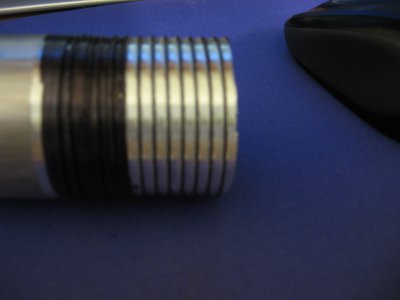
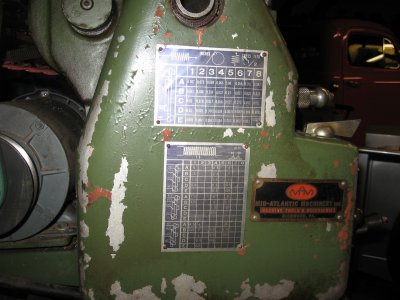
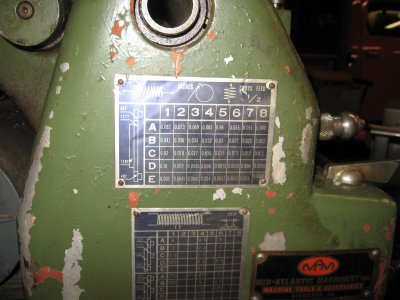
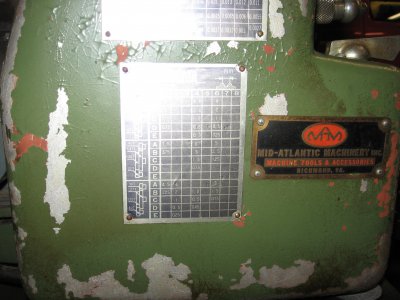
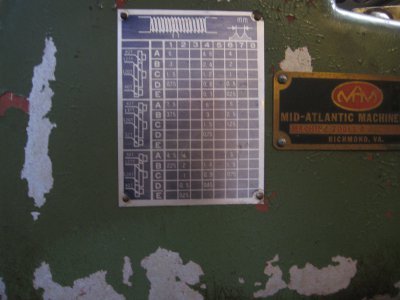
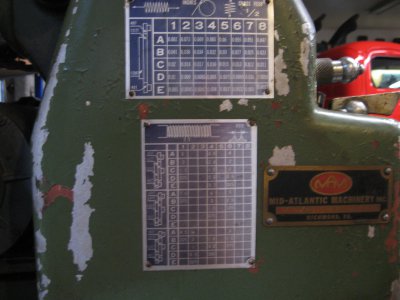
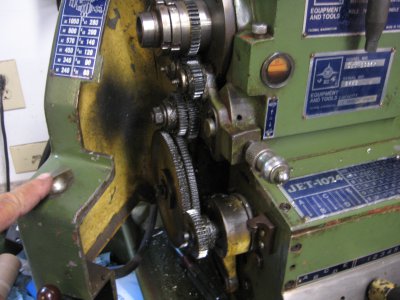
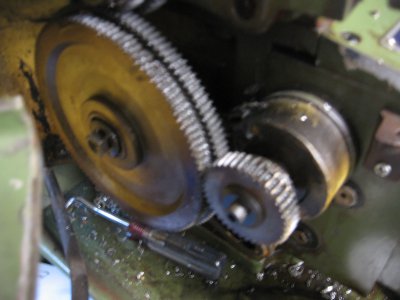
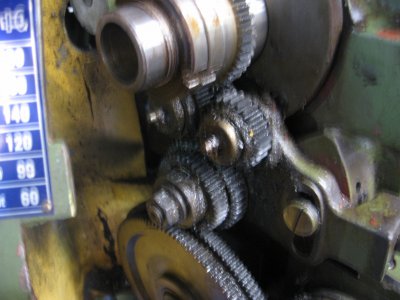
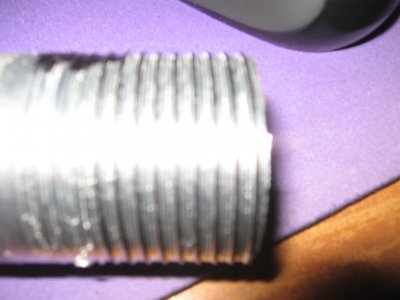
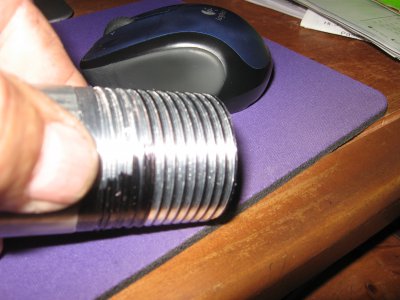
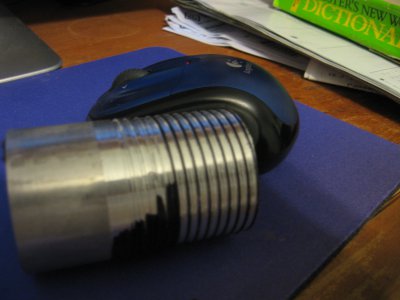
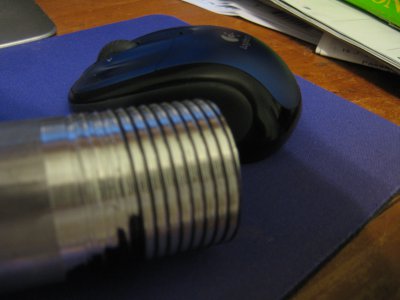
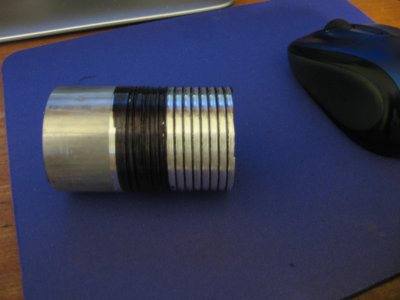
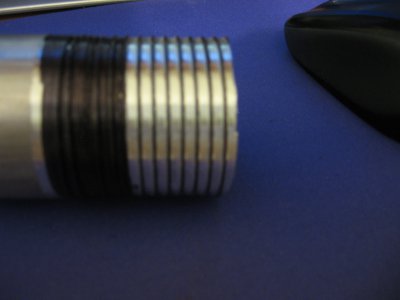
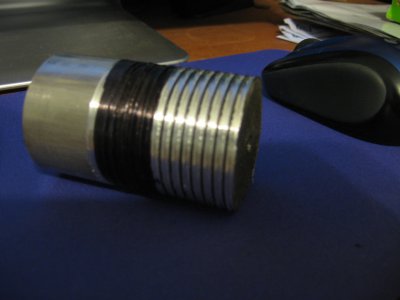
I set up for 8tpi and had everything sat as it should be .I dropped in the thread gauge on the #1. I ran a thread pass at .030 ,I then backed out the cross slide one turn , moved the saddle back to start, moved the cross slide back to .0 . I then ran a second pass without any other change. the second pass cut a new thread just beside the first ( around .020 over from the first one ) and then a third with another new thread about .020 past the second one ...
I also set up a dial indicator on the saddle and remove all the slack and marked the chuck and rotated it one turn by hand . I got a reading of 0.1175 the first turn and 0.1180 on the second turn it was set up to run 8tpi and dropped the thread gauge in on the number 1...
hear are the photos below
- - - Updated - - -
sorry my camera skills are poor I'll try again
















- Joined
- Feb 8, 2014
- Messages
- 11,144
I'm going from memory here, but I think the two large gears in the picture are 120T and 127T respectively. I think the gear driving the QCGB needs to run on the 127T gear for cutting English threads. I think all you have to do is flip that gear around so it meshes with the 127T gear, You will have to adjust the mesh depth, and you should be good to go.
The 0.118 you got, is pretty close to 3mm (0.11811). Multiply 0.11811 by (127/120) = 0.12499 or so close to 1/8 inch it's close enough.
The 0.118 you got, is pretty close to 3mm (0.11811). Multiply 0.11811 by (127/120) = 0.12499 or so close to 1/8 inch it's close enough.
- Joined
- Apr 11, 2014
- Messages
- 87
I'm going from memory here, but I think the two large gears in the picture are 120T and 127T respectively. I think the gear driving the QCGB needs to run on the 127T gear for cutting English threads. I think all you have to do is flip that gear around so it meshes with the 127T gear, You will have to adjust the mesh depth, and you should be good to go.
The 0.118 you got, is pretty close to 3mm (0.11811). Multiply 0.11811 by (127/120) = 0.12499 or so close to 1/8 inch it's close enough.[/QUOTEI did a count of the gears you mentioned and you are right the gear was set for mm threads.
I do however wonder why I kept getting a new thread on every pass with everything set the same . It seems to me that it should cut the same every time if it is engaged on the same number each time regardless of what type thread it is . Can someone skool me on this .Thank you all for your support on this matter...John
- - - Updated - - -
A special thanks to Don B for your idea on checking the saddle travel... It solved the issue as to what thread type it was set on
- Joined
- Apr 7, 2014
- Messages
- 343
I have that same lathe. ( I just looked again and see you have it's big brother, but it is effectively the same lathe)
your change gears are set up wrong. The lowest gear needs to be moved to the larger gear.
You are set up for metric threading right now. When you are set up for metric threading on your machine the half nuts can't be disengaged during the entire threading operation because the thread dial will never catch the same thread.
Set it up like this and you will be fine.
Since you are in there, it may ay be a good time to clean up your gears and relube them.
Chris
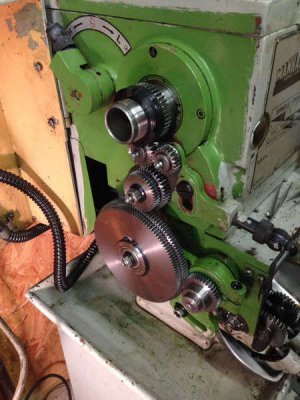
your change gears are set up wrong. The lowest gear needs to be moved to the larger gear.
You are set up for metric threading right now. When you are set up for metric threading on your machine the half nuts can't be disengaged during the entire threading operation because the thread dial will never catch the same thread.
Set it up like this and you will be fine.
Since you are in there, it may ay be a good time to clean up your gears and relube them.
Chris

Last edited:
- Joined
- Apr 11, 2014
- Messages
- 87
I have that same lathe. ( I just looked again and see you have it's big brother, but it is effectively the same lathe)
your change gears are set up wrong. The lowest gear needs to be moved to the larger gear.
You are set up for metric threading right now. When you are set up for metric threading on your machine the half nuts can't be disengaged during the entire threading operation because the thread dial will never catch the same thread.
Set it up like this and you will be fine.
Since you are in there, it may ay be a good time to clean up your gears and relube them.
Chris
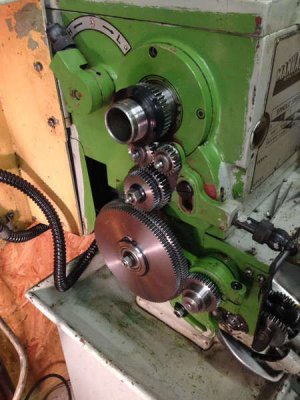
I removed the end gear set today and found 2 bearings on the large gear were worn. I will clean up the gears and replace the bearings
Thanks for the photo I was wondering how the gear set looks like in the correct position .Thanks to everyone hear for your help.
- Joined
- Mar 31, 2014
- Messages
- 607
I do however wonder why I kept getting a new thread on every pass with everything set the same . It seems to me that it should cut the same every time if it is engaged on the same number each time regardless of what type thread it is . Can someone skool me on this.
Hi John
I'm glad you where able to get things sorted.
A gentleman that goes by the user name "12bolts" posted this info in a thread
" Gears, Fears & Tears... if I don't get it right!" and I think it might be helpful..!
--------------------------------------------------------------------------------------
I do not deserve any credit for the following.
"The most common lead screw is 8 TPI, a pitch of 0.125". That's 3.175 mm, not a terribly convenient number from which to derive the standard metric pitches. The purpose of metric transposing gears is simply to scale that pitch into a more useful value that can be divided or multiplied, using common gear ratios, to get the standard metric pitches.
The traditional pair of transposing gears have 127 and 100 teeth. The lead screw pitch, 3.175 mm, divided by the ratio of those two gears, 1.27, gives us 2.5 mm, a much easier number to further divide or multiply into standard metric pitches. The important thing to remember is that using metric transposing gears allows you to treat your inch lead screw as a metric lead screw. The rest of the gear train simply multiplies or divides that new pitch value to get to the desired pitch. If you think of the transposing gears and lead screw together it avoids having to include the specifics of the conversion in every gear calculation.
A simple example will reinforce the concept. You've installed the metric transposing gears and now think in terms of having a 2.5 mm pitch lead screw. You want to cut a 1.0 mm pitch thread so you need some gears in the path between the transposing gears and the lead screw (or spindle, depending on where the transposing gears are installed) with a ratio of 1:2.5. A 16 and 40 tooth pair would do the job (as would various others having the same ratio). If you have a lathe with a quick change gearbox, the same rules apply. You still need an overall 1:2.5 ratio, using some combination of external gears and the ratios available within the gear box. I'll cover QC gearboxes in more detail later, but for the moment we'll assume a simple change gear machine with no gear box."
--------------------------------------------------------------------------------------
Happy threading....!

